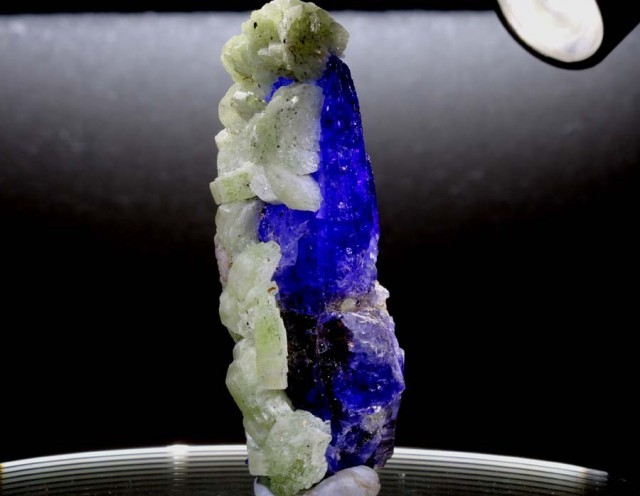10.05 CTS Australite flange TEKTITE TBM-2428 TRUEBLUEMINERALS
- SKU
- TBM-2428
- Dimensions (mm)
- 15 x 13.6 x 8.8mm
- Weight (cts)
- 10.05
- Treatment
- No Treatment
- Shape
- Freeform
- Type
- Rough
- Colours
-
TEKTITE-COLLECTOR PC
WESTERN AUSTRALIA
TEKTITE FLANGE
PERFECT SHAPE
THE COME IN VARIOUS SHAPES AND SIZES SOME BEING VERY RARE
the original body (a sphere in this case) is interpreted to be solid or very close to solidification by re-entry stage. As the sphere re-enters it ablates and spalls. Spalling results in characteristic core shapes. Once ablation of material has crossed the equatorial margin of the specimen, a flange may begin to form. This leads to formation of ‘button’-type tektites. Further spalling may result in loss of the flange and creation of a lens. In larger specimens (>6g), which are less thermodynamically stable, the loss of the flange and creation of a core is inevitable. The flange may reform with further spalling resulting in conical core morphologies. If the button continues to ablate then end-members such as plates or bowls may form. Ablation, spalling and flange formation combine to produce unique tektite forms
FOR FUTHER READING
Cleverly, W. H. 1986. Australites from Hampton Hill Station, Western Australia. Journal of the Royal Society of Western Australia, Vol. 68, Part 4, p. 81-93.
McNamara, K. and Bevan, A. 1985 (2nd (revised) edition, 1991). Tektites. Western Australian Museum. pp. 28. (Currently in print!)
| Shipping provider | Shipping to Australia | Shipping to rest of world | Combined Shipping (Australia) | Combined Shipping (rest of the world) |
|---|---|---|---|---|
| Standard Shipping - Tracked |
|
|
|
|
| FedEx |
|
|
|
|
| DHL |
|
|
Not available |
|
- SKU
- TBM-2428
- Dimensions (mm)
- 15 x 13.6 x 8.8 mm
- Weight (cts)
- 10.05
- Treatment
- No Treatment
- Shape
- Freeform
- Type
- Rough
- Colours
-
TEKTITE-COLLECTOR PC
WESTERN AUSTRALIA
TEKTITE FLANGE
PERFECT SHAPE
THE COME IN VARIOUS SHAPES AND SIZES SOME BEING VERY RARE
the original body (a sphere in this case) is interpreted to be solid or very close to solidification by re-entry stage. As the sphere re-enters it ablates and spalls. Spalling results in characteristic core shapes. Once ablation of material has crossed the equatorial margin of the specimen, a flange may begin to form. This leads to formation of ‘button’-type tektites. Further spalling may result in loss of the flange and creation of a lens. In larger specimens (>6g), which are less thermodynamically stable, the loss of the flange and creation of a core is inevitable. The flange may reform with further spalling resulting in conical core morphologies. If the button continues to ablate then end-members such as plates or bowls may form. Ablation, spalling and flange formation combine to produce unique tektite forms
FOR FUTHER READING
Cleverly, W. H. 1986. Australites from Hampton Hill Station, Western Australia. Journal of the Royal Society of Western Australia, Vol. 68, Part 4, p. 81-93.
McNamara, K. and Bevan, A. 1985 (2nd (revised) edition, 1991). Tektites. Western Australian Museum. pp. 28. (Currently in print!)
| Shipping provider | Shipping to Australia | Shipping to rest of world | Combined Shipping (Australia) | Combined Shipping (rest of the world) |
|---|---|---|---|---|
| Standard Shipping - Tracked |
|
|
|
|
| FedEx |
|
|
|
|
| DHL |
|
|
Not available |
|

rare large gemstones and minerals.
-
 Positive
PositiveAbsolutely stunning, incredible quality, fast shipping i am blown away by it thankyou so very much
-
 Positive
PositivePaid and shipped - no feedback left after 100 days
-
Positive
This is the most beautiful Blue Zircon that I have ever seen. I know Zircon's very well, and this Blue Zircon is a premium gem and the correct color
-
 Positive
PositivePaid and shipped - no feedback left after 100 days
-
 Positive
PositivePaid and shipped - no feedback left after 100 days











